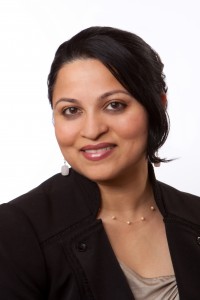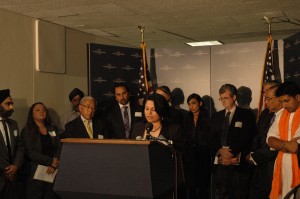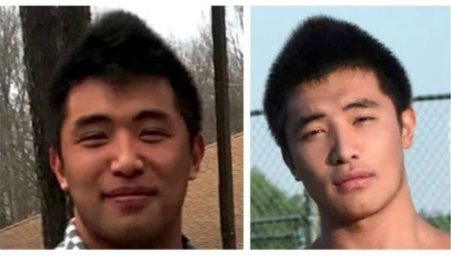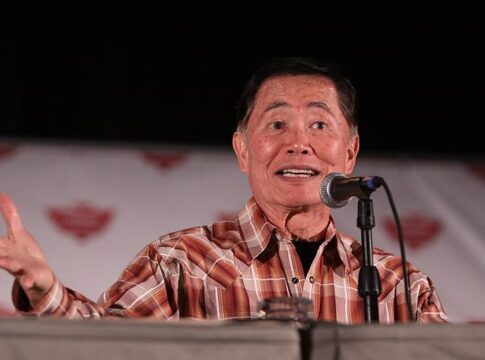 (Note from the editor: After ten years as Executive Director of South Asians Americans Leading Together, Deepa Iyer is stepping down. Iyer is in a unique position to comment on the growth of the South Asian American community over that time. She agreed to answer a few questions for AsAmNews.)
(Note from the editor: After ten years as Executive Director of South Asians Americans Leading Together, Deepa Iyer is stepping down. Iyer is in a unique position to comment on the growth of the South Asian American community over that time. She agreed to answer a few questions for AsAmNews.)
How is SAALT different today and that it was when you started as Executive Director ten years ago?
It’s been a long and sometimes challenging, but always rewarding, road over the past ten years. When I started as the Executive Director in 2004, SAALT’s office consisted of a windowless, one-room office in midtown Manhattan. In those beginning years, we were focused on three key goals: (1) bringing South Asian organizations together around shared values and policy principles; (2) addressing the post September 11th backlash; and (3) building capacity and infrastructure within SAALT.
Through the tremendous commitment and hard work of members of our staff (present and past), board, advisors, and volunteers and with the support of stakeholders, we have been able to make progress on those three goals. Today, we operate from an office in the Washington DC area with five full-time staff members and core consultants. SAALT also coordinates the National Coalition of South Asian Organizations (NCSO), a network of organizations that provide services to, advocate on behalf of, or organize South Asians here in the United States. The NCSO is a leading national collective voice on civil rights, immigrant justice and gender equity. SAALT has also contributed to national conversations and campaigns related to issues such as the post 9/11 backlash and immigration reform by generating reports, changing media narratives, and mobilizing community members in forums and townhalls.
How are the challenges different today than they were ten years ago?
LATEST STORIES
Ten years ago, South Asian communities were finally coming face to face with racism and discrimination due to the unprecedented level of backlash and profiling after 9/11. Previously, many South Asians were more concerned with maintaining a position of privilege in America’s racial landscape. On 9/11, South Asians lost, as Vijay Prashad has noted, their “probationary status” in the racial hierarchy. In order to confront the 9/11 backlash, many South Asians realized that we needed networks to connect with one another, factsheets and materials to raise awareness, advocates to represent our community’s interest at policy-making tables, and thought leaders to disrupt media narratives. Yet, our community lacked infrastructure. Organizations that existed prior to 9/11 were primarily social service providers or anti-domestic violence agencies serving tremendous needs. SAALT is one of the post 9/11 organizations in the US, along with groups like Desis Rising Up and Moving, the Sikh Coalition and others.
Today, we ask ourselves often if we have moved beyond being a post 9/11 community or not. In many ways, we have not yet moved beyond the impact of the post 9/11 moment. Events such as the hate crime that occurred in Oak Creek, Wisconsin in August of 2012, or the anti-Muslim sentiment that we track in political discourse show us that there is still much work to be done. At the same time, as South Asians grow in population and become more diverse – we are the fastest growing ethnic group as of the 2010 Census – our needs too are becoming complex. We have an increasing working class population of South Asians (from domestic workers to cab drivers), more undocumented South Asians striving for equality, and a growing senior population. We will need to be ready to address these complex needs over the next ten years.
What are you most proud of accomplishing during your ten years at SAALT?
None of the accomplishments that I’m proud of occurred in a vacuum. A number of committed people contributed to any accomplishments for which I could take credit. Moments that come to mind include the opportunity to facilitate a meeting with the President (the first of its kind in the Obama Administration with AAPI leaders) in 2013; the National South Asian Summit in 2007 which brought together community leaders around the country for the first time since 9/11 and sparked the creation of the NCSO; and our efforts to disrupt narratives that reinforce stereotypes about South Asians in the media.
What issue most frustrated you during your ten years at SAALT?
I think that my frustration is one shared by many Executive Directors of small, under-resourced non-profits: the constant pressure to innovate and to demonstrate impact externally, while deepening the organization’s infrastructure. This ranged from raising funds to ensuring that staff members felt connected to the mission and inspired by it to identifying ways to strategically position the organization. Being an Executive Director often feels like you are being tugged in ten different directions at once, and that you are often barely fulfilling the demands that exist. I have thankfully been able to rely on a supportive group of staff, board members, mentors and peer Executive Directors during the more challenging times!
South Asian Americans are very diverse coming from many countries including India, Pakistan, Bangladesh, Nepal and Sri Lanka? What are the common bonds that unite South Asian Americans and what are the difficulties in forming coalitions within the South Asian American community?
Over 3.5 million South Asians live in the United States today with a range of cultural, religious and linguistic backgrounds. Through SAALT’s work, I have found that South Asians cross those boundaries and find common cause through shared experiences and goals for the future. We often start many of our community meetings with an exercise called “What’s Your Point of Entry?” in which we ask South Asians to place themselves on a timeline of historical events. When folks engage in this activity, everyone quickly realizes how common our shared experiences are as immigrants or people of color in the US: there are invariably stories of feeling singled out in grade school because of your name, religious attire or your South Asian lunch, or of being screened at airports post 9/11. SAALT works to bring these shared experiences to the surface among South Asians, and to facilitate conversations that identify shared goals for what country we all want to live in. In this way, we have found that it is possible to build understanding among diverse South Asian community members.
How in your opinion does the South Asian American experience fit into the overall Asian American experience?
SAALT has made efforts to form coalitions with other Asian American groups including the National Council of Asian Pacific Americans.What push back, if any, has SAALT received from South Asian Americans who feel their experiences are different than other AAPI groups and that SAALT should concentrate its efforts more exclusively in the South Asian American community?
My own journey into social change work and the non-profit sector began in Asian American organizations. I believe that I brought that point of view and grounding to SAALT. We have always worked quite closely with Asian American allies, and over the past few years, we chaired the National Council of Asian Pacific Americans (NCAPA). South Asians have similar experiences with other Asian Americans in terms of facing discrimination, the impact of racial hierarchies and the model minority myth, and barriers related to language and culture. Having said that, the efficacy of the Asian American racial construct is still uncertain: it’s an experiment and work in progress that needs to be monitored and evaluated regularly to ensure that missing voices and experiences are included and that there are truly common ties that bind us together.
What are the most important issues facing SAALT today?
In the short-term, our main focus will be to support and welcome our new Executive Director, Suman Raghunathan, who starts in February 2014 and to implement our programmatic and policy objectives for the year. We are planning to engage more deeply on immigration reform and will be traveling around the country to convene townhalls and forums with our partners. We will also be implementing a program called We Build Community to engage members of the NCSO and build their capacity and resources.
Is there anything else you’d like to add that we haven’t yet covered?
In terms of my future plans, I am planning to spend the first few months de-cluttering my mind! This will likely include time for reflection and introspection, writing, and re-connecting with people and activities that I’ve set aside during my tenure as Executive Director. I will also be consulting for SAALT as a Strategic Advisor to assist with the leadership transition, and be available for speaking engagements. I am most excited about delving into the process of writing a book on the shifting racial landscape which will be published by The New Press in 2015. I invite readers to connect with me @dviyer on Twitter or via email at [email protected].








